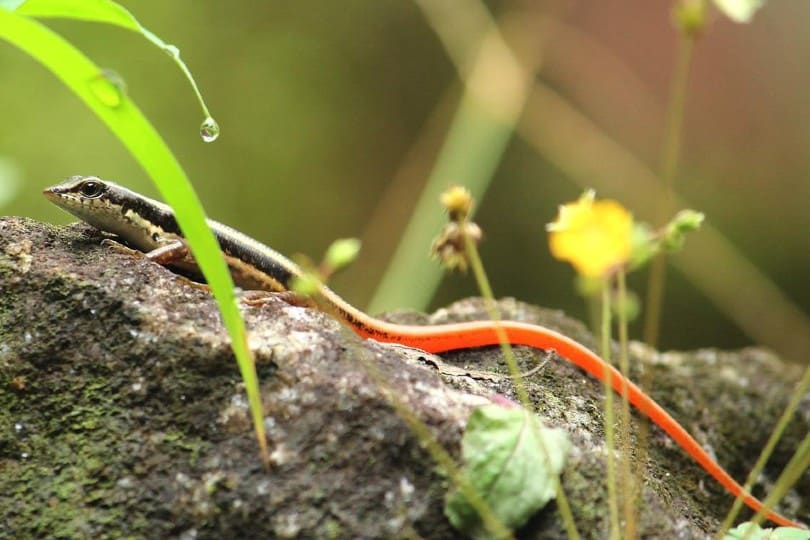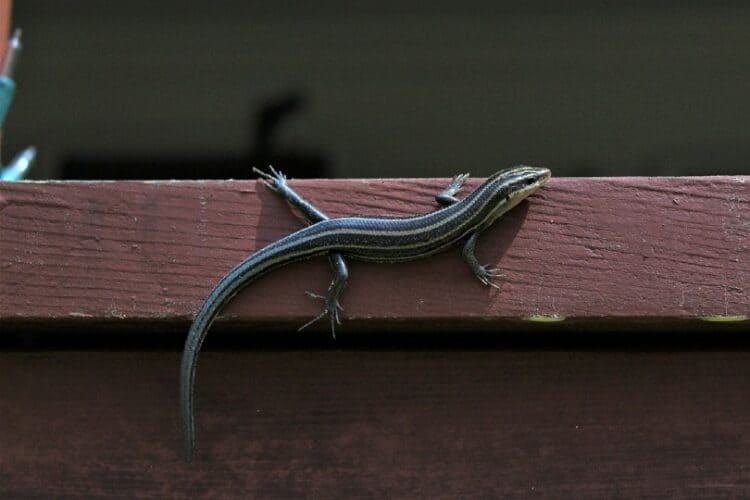Cats are natural predators, even if pampered house kitties choose not to act on their instincts. Generally, cats are the ones that do all the damage to their prey, but is there ever a situation where hunting can pose a danger to your pet? For example, are skinks poisonous to cats?
Skinks, a common member of the lizard family, pose a health risk to cats if eaten, although whether they are truly poisonous is not entirely clear. We’ll explain what this means in this article. In addition, we’ll let you know what to do if your cat eats a skink and how to keep them safe.
What Are Skinks And Why Should You Worry About Them?
Skinks are lizards from the family Scincidae, found throughout most of the world. They are one of the most diverse families of lizards, with over 1,200 species represented. In the United States, skinks are found in 47 of the 50 states, so the odds of your cat encountering one, especially if they spend time outside, are fairly high.
Skinks pose a couple of potential risks to your cat if eaten.
First, one very common species of skink, the five-lined skink, commonly called a “blue-tailed lizard” is widely believed to cause neurological signs in cats if eaten. Research has not conclusively proved that the skinks are poisonous, but cats sometimes display symptoms like a head tilt or other signs that are blamed on eating a blue-tailed lizard.
A confirmed danger to cats posed by eating skinks is liver fluke infestation. Liver flukes are parasites that thrive in the water in warm regions of the country, such as Florida and Hawaii. Skinks are one of several secondary hosts that can harbor this parasite during certain phases of their life cycle.
Cats can develop liver flukes by eating the skink host. The parasite is widespread in its native regions, with an estimated 15%-85% of cats exposed in these areas potentially becoming infected.

What To Do If Your Cat Consumes a Skink
If your cat eats a skink, you may not notice signs right away unless it doesn’t agree with their stomach and comes right back up!
Should you notice signs like a head tilt, it doesn’t automatically mean they are caused by eating a skink. Head tilt, incoordination, and similar symptoms could indicate several other conditions, including vestibular disease, ear infections, or brain disease. If you spot these concerning signs, it’s time for a trip to the vet to find out what’s going on.
A liver fluke infestation may take months to cause symptoms in your cat, and many infested kitties never develop signs. Problems arise when the cat’s gallbladder and bile ducts become clogged with parasites, disrupting their natural function. Symptoms of liver fluke disease include the following:
- Weight loss
- Jaundice (yellow eyes, skin, and gums)
- Loss of appetite
- Swollen belly
- Vomiting and diarrhea
If you see any of these symptoms in your feline, see a veterinarian as soon as possible. Severe liver disease can be life-threatening and requires aggressive treatment.
Keeping Your Cat Safe From Skinks
You can keep your pet from eating skinks by confining them indoors. Yes, a skink could slither into your house, especially if you live in a rural area. However, the odds of a close encounter are much lower for inside cats.
With an outdoor cat, it may be tough to keep them from eating a skink. If possible, supervise your cat’s outside visits and try to keep them away from skinks. Outdoor cats that live in areas with known liver fluke populations may need to take preventative medications to avoid infection. Consult your veterinarian for advice in this regard.
Final Thoughts
Skinks can be fun to observe in nature or even keep as pets. However, they don’t mix well with cats, as we’ve learned in this article. Keeping your cat indoors is safest for many reasons, not just avoiding potential problems from eating skinks. To protect local wildlife populations and help your cat live a healthier, safer life, let skinks rule the outside world while your kitty stays in the house.
Featured Image Credit: Pixabay














